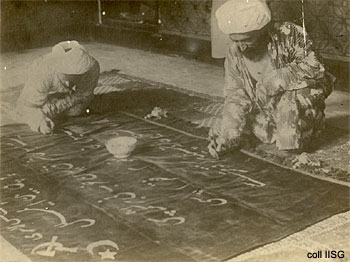
Massive rally in Moscow in support of honest elections, February 4, 2012.

Massive rally in Moscow in support of honest elections, February 4, 2012.
By Doug Lorimer
Doug Lorimer is a member of the National Executive of the DSP. This article is based on a report adopted by the 14th National Conference of the DSP, held in Sydney, January 2-6, 1992.
©Resistance Books 1997; first published 1992, second (revised) edition 1997
Contents
January 10, 2012 -- Real News Network -- As the Russian protests rocked the plans of President Putin, who, as Boris Kargalitsky wrote, wanted the elections to legitimise decisions that had already been made, these protests, as he said, essentially were led by segments that were more or less neoliberal or nationalist, but not much by what I guess Boris would call the left. And why is that? So now joining us to talk about the state of the left in Russia is Boris Kagarlitsky. He's a sociologist. He was a deputy to the Moscow city soviet between 1990 and '93. And he's currently the director of the Institute of Globalisation and Social Movements in Moscow.
By the Russian Socialist Movement

Tens of thousands protest in Bolotnaya Square, Moscow, December 10, 2011. Photo by Andrey Kolganov.
By Boris Kagarlitsky
December 21, 2011 -– Links International Journal of Socialist Renewal -- The calls by the “moderate left” for passively following behind the liberals are supposedly based on the need to “work among the people”, to go where the masses are. But how, and with whom, are the forces of the left to set out after these ardently pursued masses? With badly printed leaflets full of abstract slogans?

Bolotnaya Square, Moscow, December 10, 2011. Photo by Andrey Kolganov.

By Boris Kagarlitsky, translated from Russian by Renfrey Clarke
Boris Kagarlitsky.
[In English at http://www.links.org.au/node/2593.]Por Boris Kagarlitsky, traducido del inglés para Rebelión por Germán Leyens
El sistema económico internacional que se perfiló después del colapso de la Unión Soviética todavía no está muerto, pero está moribundo. Lo vemos todos los días, no solo en informes sobre la crisis sino también en otras noticias de todo el mundo que cuentan la misma historia: el sistema no funciona.
La verdad es que el sistema nunca ha funcionado para los pobres y las clases trabajadoras. No se diseñó con ese propósito, no importa lo que nos digan todo el tiempo sus propagandistas y diversos intelectuales corruptos. El sistema funcionó para las elites: generó una tremenda redistribución de la riqueza y del poder a favor de los que ya eran ricos y poderosos. Aunque las elites no tienen suficiente coraje para admitirlo, hay que transformar el sistema.
Boris Kagarlitsky.
By Boris Kagarlitsky

Estonian Nazis parade on July 30, 2011.
By Rupen Savoulian

Painting slogans for the Congress of the Peoples of the East, September 1920, Baku. Photo from IISG.
By John Riddell
July 21, 2011 -- http://johnriddell.wordpress.com, posted at Links International Journal of Socialist Renewal with the author's permission -- Just under a century ago, the newly founded Soviet republic embarked on the world’s first concerted attempt to unite diverse nations in a federation that acknowledged the right to self-determination and encouraged the development of national culture, consciousness and governmental structures. Previous major national-democratic revolutions – in Britain, France, Germany, Italy, the United States – had been made in the name of a hegemonic nation and had assimilated, marginalised or crushed rival nationalities. The early Soviet regime, by contrast, sought to encourage, rather than deny, internal national distinctiveness.